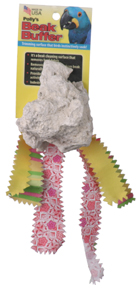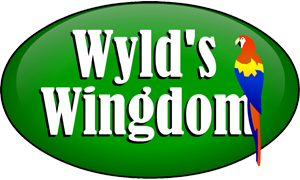Pet Bird Care – Bird Beak Basics
Pet Bird Care – Bird Beak Basics

The bird naturally keeps growth in check by wearing down the beak through normal activities like feeding, grooming, chewing, using the beak for climbing and rubbing the beak. It’s generally thought that a healthy bird will wear down the new growth of the beak so that it always looks the same.
Birds can have an overgrown beak as a result of limited activity, but it can also be a sign of trauma, abnormal development, nutritional deficiencies, liver disease or virus in certain species. An overgrown beak can be trimmed using a Dremel tool, clippers or scissors, and care must be taken to not trim too much, causing pain and bleeding.
Pet bird owners can promote healthy beaks by providing birds with proper nutrition, pet bird chewing toys and perches to rub the beak on. Bird owners should keep an eye on the beak and look for cracks, lesions, discoloration and overgrowth. Please consult a veterinarian or avian specialist for guidance about any abnormalities of the beak.

